Best
BUDGET GUITAR FOR A BEGINNER
-
Overall: Laminated spruce top and mahogany body
-
Best Feature: Features walnut fingerboard and a clear gloss finish
-
TedScore™: 8/10
Best
OVERALL HIGH-END BUDGET GUITAR
-
Overall: Features a sublime quality solid sitka spruce top
-
Best Feature: Solid Sitka spruce top
-
TedScore™: 9/10
Best
BUDGET GUITAR FOR THE SMALLER PLAYER
-
Overall: Solid sitka spruce top
-
Best Feature: Modified low oval neck style
-
TedScore™: 8/10

Ever wondered, “Just how many guitar chords exist?” as you casually strum away on your beloved guitar?
My adventure through chord land was like wandering through a never-ending maze; just when I thought I’d conquered the basics, a new variation sprouted, adding a twist to my tunes.
My fingers have danced across the fretboard from the straightforward G major to the tricky B7, and every press and pluck was a step towards fluency in the rich language of music.
Whether you’re a beginner or an experienced guitarist, grasping the wide range of chords can transform your playing from basic to vibrant and colorful.
Let this article be your guide to help you discover the basics of chords, understand the different types, and learn how to combine them.
Understanding Guitar Chords
When I think about guitar chords, I imagine an incredible palette of musical colors that guitarists use to paint their sonic landscapes.
Each chord uniquely combines notes, creating different harmonies and emotional textures.
Chord Foundations
Chords are groups of notes played together, and they’re the building blocks of most guitar music.
A major chord gives off a happy, bright sound, while its cousin, the minor chord, has a more somber, reflective vibe.
Take the D minor chord; it comprises just three notes (D, F, and A), forming a triad, but it can express a whole range of emotions.
Chord Varieties
Exploring beyond the basics, you’ll discover a universe of chord types like triads, seventh chords, and extended chords.
If we observe barre chords, we move the same shape across the fretboard to play different chords, which is a neat trick.
Then, the colorful suspended chords, dominant 7th, major 7th, and minor 7th chords, add tension and complexity to the music.
Alternate Tunings and Voicings
Alternate tunings open up a new world of chord voicings and unique sounds. By tweaking the tuning of the strings, I can play chords that would be impossible in standard tuning.
Different chord voicings—altering the order of notes—also play a vital role, like playing an E major chord with a G# on the bass for a lush new sound.

Learning and Playing Guitar Chords
Embarking on your guitar journey, you’ll discover a trove of chords that form the backbone of countless songs.
Whether you aspire to strum along to your favorite tunes or create your melodies, understanding and mastering guitar chords is your golden ticket.
Practicing Basic Chords for Beginners

Sometimes, starting simple is best. I start with the essentials: A, Am, C, D, Dm, E, Em, F, and G.
These open chords, found at the top of the fretboard and often involving open strings, are the building blocks for many a song.
Don’t worry about nailing them immediately; slowly and steadily, your fingers will get used to the dance along the strings.
Mastering Chord Transitions and Sequences
It’s all about the flow once I’ve got to the basic chords.
For instance, transitioning smoothly from a G major to a C major can open up a sea of songs. I practice moving between chords, like switching from E Major to A Minor, without breaking the rhythm.
The C major chord is one of the foundational chord shapes in guitar playing, forming the basis for many other chords.
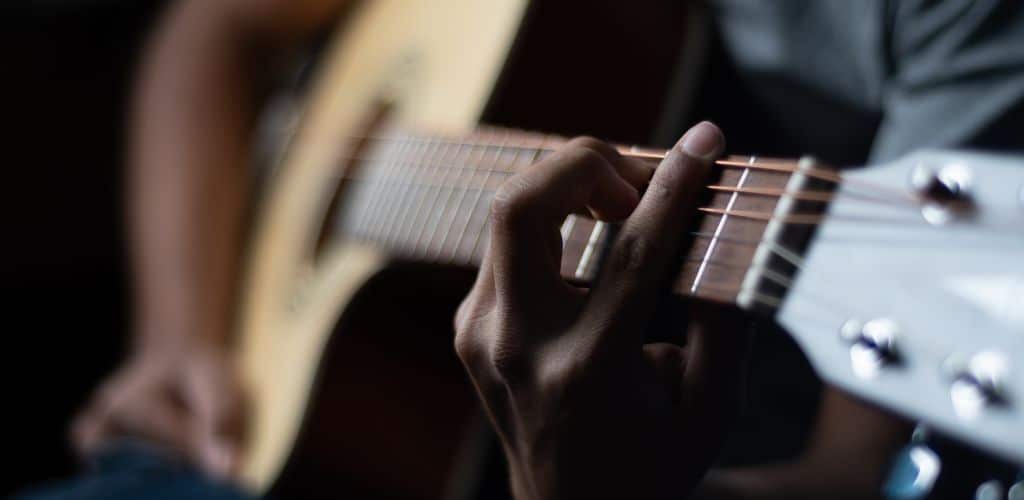
Additionally, power chords, which consist of just the root note and the fifth, are widely used in rock and punk music due to their simplicity and versatility.
As you progress in learning guitar, exploring all the chords and their various chord shapes will open up a world of musical possibilities, allowing you to create diverse sounds and express your unique style.
Using a Guitar Chord Chart Effectively
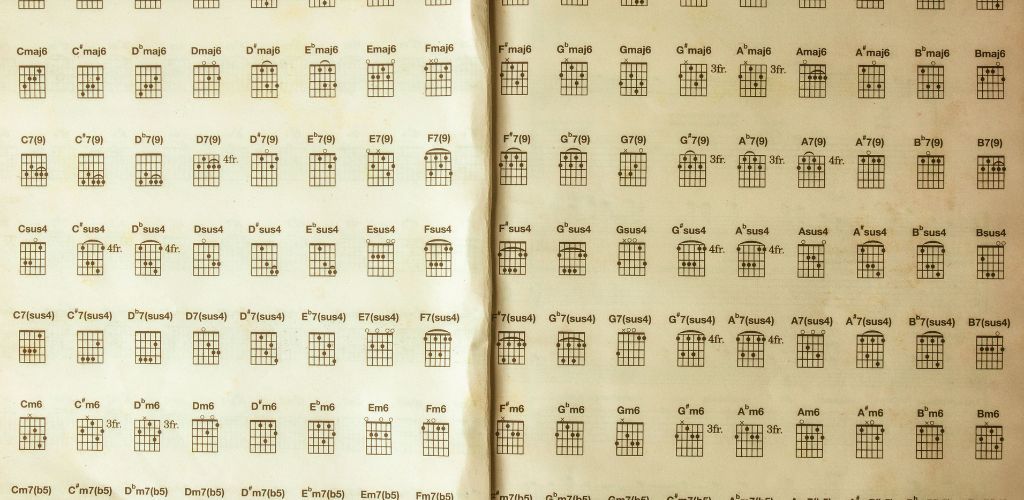
A comprehensive guitar chord chart is a treasure map. It reveals the finger placements for many chords across different pitches over the fretboard.
I refer to the chart when learning new chords, such as F# or Bb Major. It helps me visualize where my fingers should go, especially for the trickier barre chords that involve pressing down several strings simultaneously.
Developing Your Style with Unique Chord Combinations
The magic happens when I start experimenting with unique chord combinations and variations.
If you include all the major 7th, minor 7th, diminished, and slash chords, there are thousands of chords. Playing around with these allows me to create a sound that’s distinctively mine.

For example, Pop songs often feature a mix of major and minor chords, with chord progressions that create a catchy and memorable sound. Major chords bring a bright and uplifting feel to a song, while minor triad chords can add depth and emotion.
By understanding major and minor triads and how they fit into chord progressions, you can unlock the ability to play a wide range of popular songs and create your own captivating music.
It’s not just about learning chords; it’s about discovering how they can come together in unique and exciting ways.
Guitar Brand Recommendation
FENDER FA-115
The FENDER FA-115 boasts a spruce top and mahogany back and sides, offering a warm and balanced tone that is ideal for beginners.
Its comfortable neck profile and durable construction make it an excellent entry-level guitar for those looking to start their musical journey.
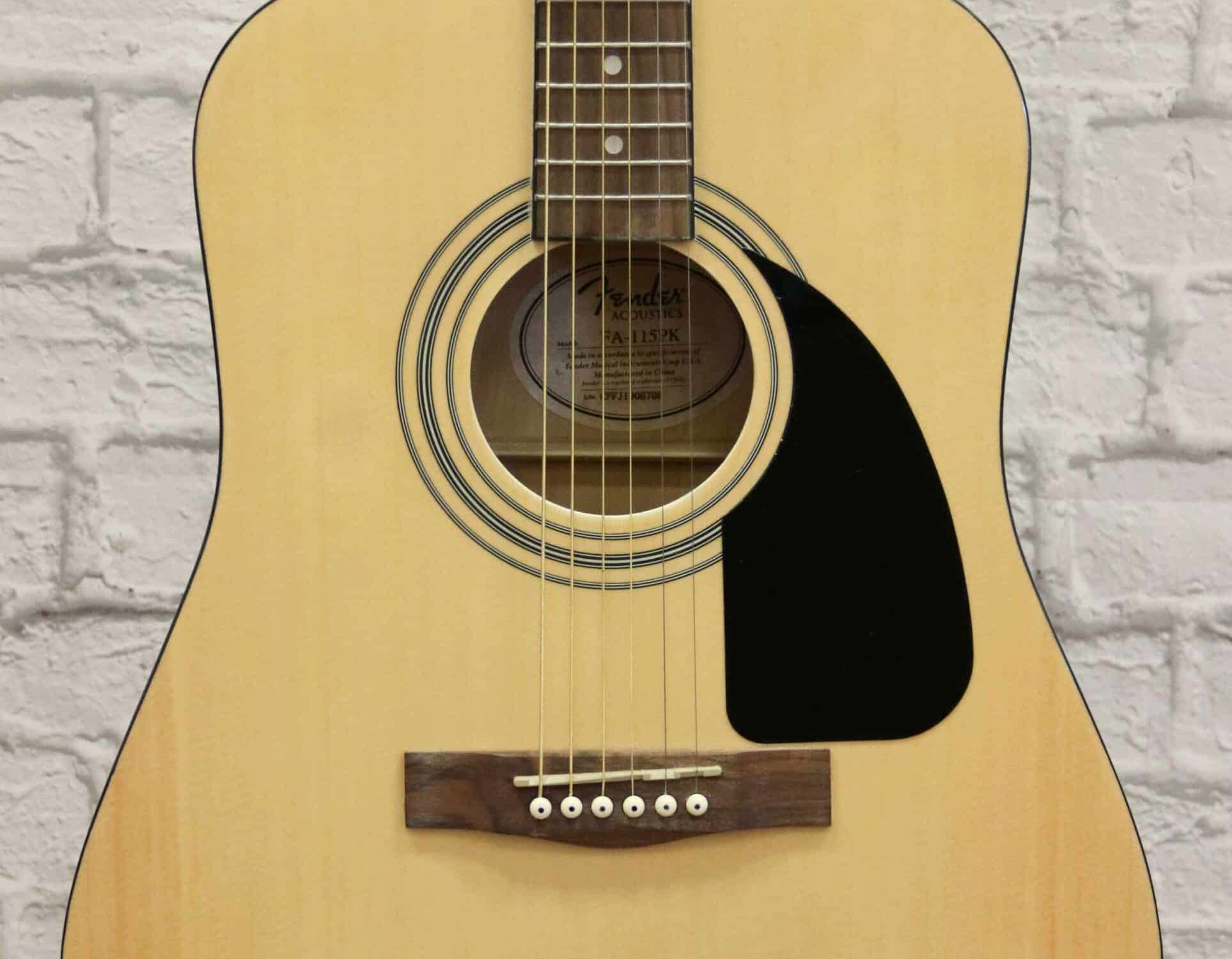
FENDER FA-115
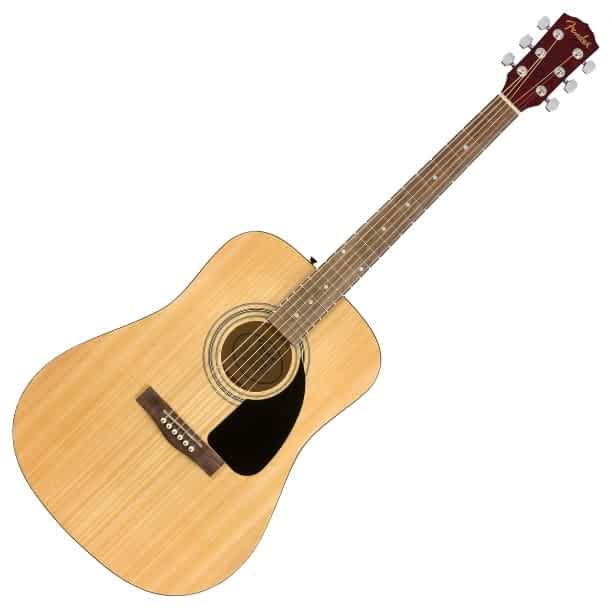
FEATURES: Laminated spruce top and mahogany body.
OTHER INFO: Features walnut fingerboard and a clear gloss finish
- Exceptional playability.
- Classic blend of tone woods.
- Perfect for beginners.
- Lack of accessories.
When you click ‘Check Price’, you’ll see there are loads of great places to buy this item. Our personal favorite is Sweetwater for the US, and Thomann and Gear4Music for the UK & Europe.
They are the largest music retailers, with excellent customer service, competitive prices, really fast shipping, and the longest guarantees.
The professional musician who wrote this article combined many things,
from the product build, manufacturer’s reputation through to feedback
from other users, to create our famous TedScore™.
MARTIN LX1 LITTLE MARTIN
The MARTIN LX1 LITTLE MARTIN is highly recommended for its compact size and exceptional build quality, featuring a solid Sitka spruce top that delivers impressive tone and volume.
Its portability and robust sound make it a perfect choice for travelers and young musicians alike.
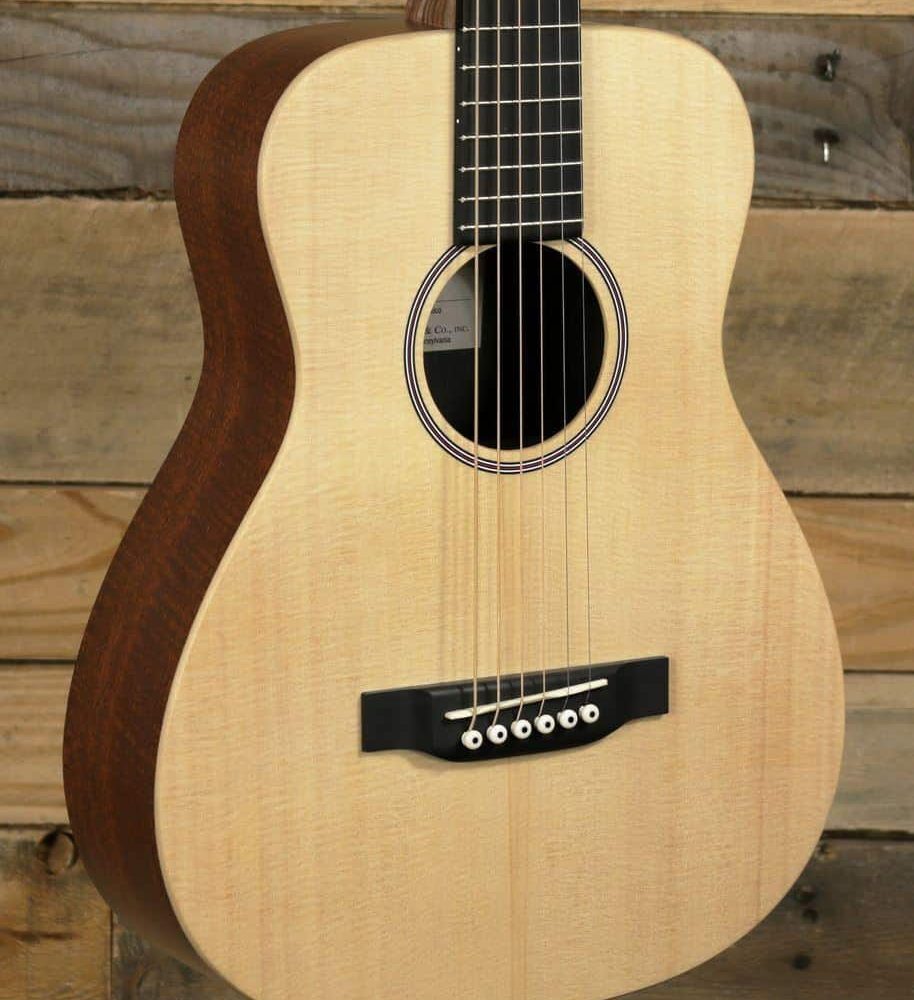
MARTIN LX1 LITTLE MARTIN
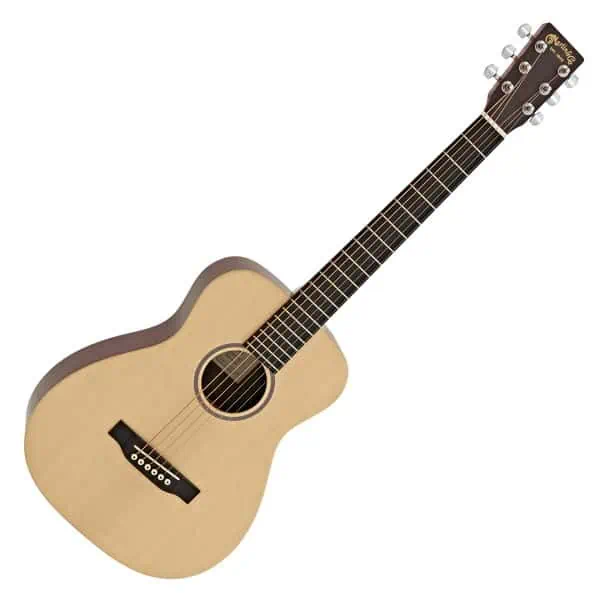
Young Players
FEATURES: Solid sitka spruce top.
- Modified low oval neck style.
- Small size makes it perfect for the young crowd
- Premium solid top emanates clear and intricate sound when strumming.
- Laminated wood body lowers its quality construction
When you click ‘Check Price’, you’ll see there are loads of great places to buy this item. Our personal favorite is Sweetwater for the US, and Thomann and Gear4Music for the UK & Europe.
They are the largest music retailers, with excellent customer service, competitive prices, really fast shipping, and the longest guarantees.
The professional musician who wrote this article combined many things,
from the product build, manufacturer’s reputation through to feedback
from other users, to create our famous TedScore™.
BIG BABY TAYLOR BBT
The BIG BABY TAYLOR BBT is perfect for both beginners and professionals due to its scaled-down size, which offers comfortable playability, and its solid Sitka spruce top, which provides a rich, full sound.
Its high-quality construction and versatile tone make it a reliable choice for practice, performance, and travel.
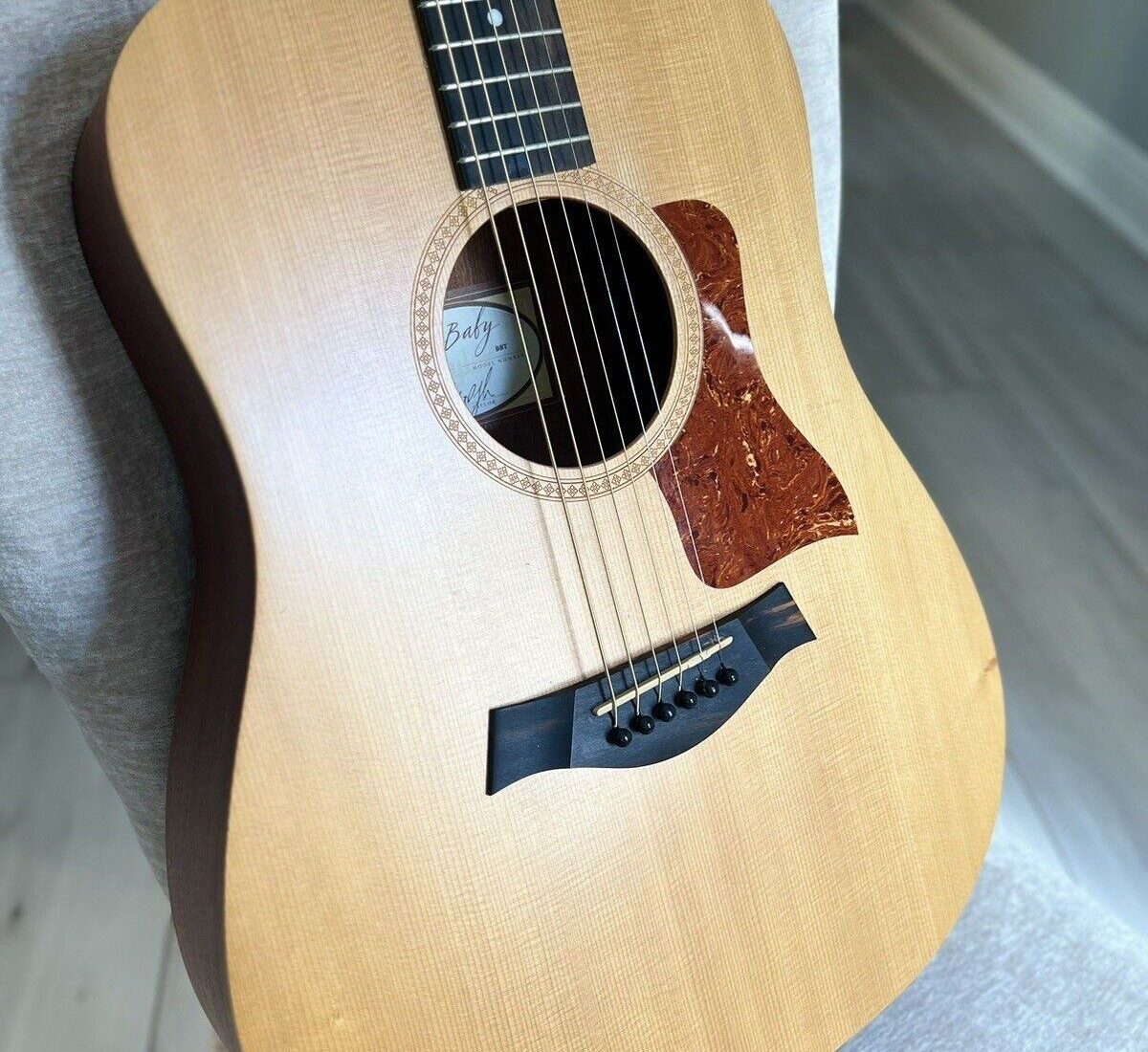
BIG BABY TAYLOR BBT
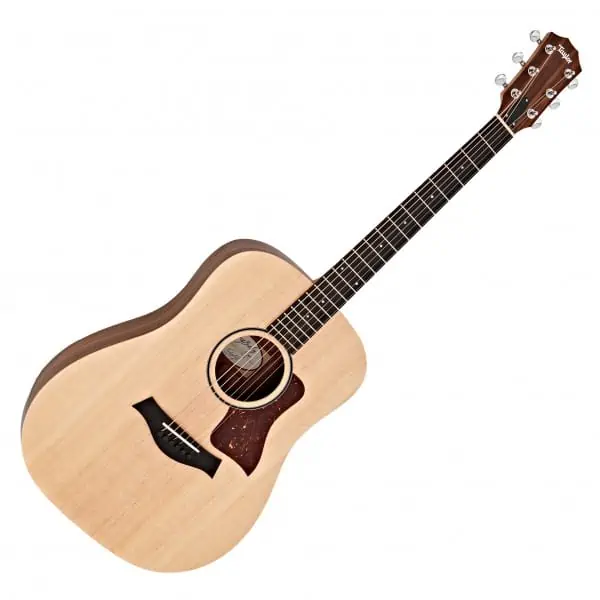
Experienced Players
FEATURES: Features a sublime quality
solid sitka spruce top.
- Solid Sitka spruce top.
- Excellent playability.
- Produces dynamic sound.
- Large size may not be suitable for younger players.
When you click ‘Check Price’, you’ll see there are loads of great places to buy this item. Our personal favorite is Sweetwater for the US, and Thomann and Gear4Music for the UK & Europe.
They are the largest music retailers, with excellent customer service, competitive prices, really fast shipping, and the longest guarantees.
The professional musician who wrote this article combined many things,
from the product build, manufacturer’s reputation through to feedback
from other users, to create our famous TedScore™.
How Many Guitar Chords Are There:
A Recap
There are 12 basic chords multiplied by the number of chord types. From those, eight types of chords can fundamentally dance across different keys.
Blend in chord progression like slash and diminished chords, and suddenly, the numbers swell impressively.
Whether you’re fond of major, minor, or even those jazzy seventh chords, there’s always a new chord to discover.
This multitude of combinations ensures that your fingers will always find a new dance to perform on the fretboard.
If we peek into the realm of possibilities, we bump into a staggering figure of 2,431 playable chords—and that’s being modest.
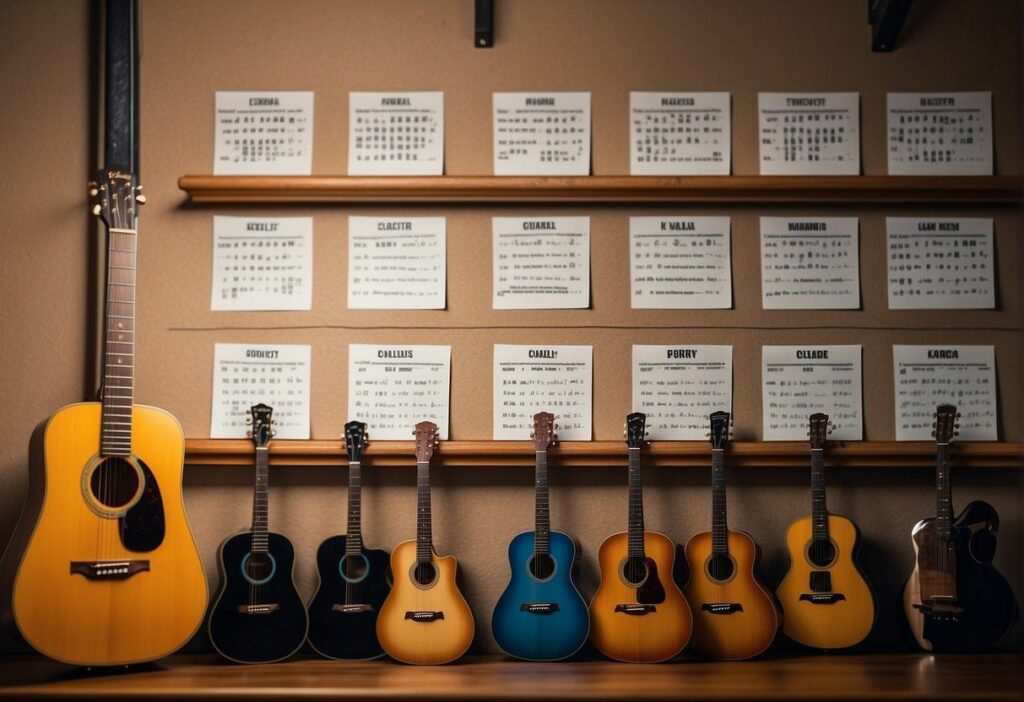
In my whimsical journey through guitar chords, here’s a nifty nugget to wrap things up:
Basic chords are known by beginners: 8 types in 12 keys
Playable chords for the keen learner: 338
Sublime total for explorers and dreamers: 2,431 playable… or more!
Imagine the symphonies you could compose or the tunes you could strum with such a colossal library at your fingertips. The key is to start simple and then waltz to the more complex ones.
Take heart in knowing there’s a chord for every mood and melody. Isn’t it like having a sonic treasure chest waiting for you to unlock its secrets with your pick?
So go ahead, charm the strings, and let the music flow—there’s a whole world of chords out there waiting for you.
Wait! We have more for you…
Jump into the next article because our list of 18 BEST ACOUSTIC GUITAR UNDER 500 is here!
FAQ's
The guitar features a wide range of chords, including dominant, major or minor chord, and many others, allowing for countless chord combinations and possibilities.
In standard tuning, the 12 basic chords in the guitar are A, A#/Bb, B, C, C#/Db, D, D#/Eb, E, F, F#/Gb, G, and G#/Ab. These chords can be played in various positions and voicings across the fretboard.
While learning a wide variety of guitar chords is beneficial, knowing it is optional is unnecessary. Focusing on mastering common chords, such as dominant, minor, and major chords, along with chord progressions, can provide a strong foundation for playing a wide range of music.
The number of guitar chords in a song can vary widely depending on the music’s style, complexity, and arrangement. Most songs generally feature a combination of basic chords, including major, minor, and occasionally other chord types, such as dominant or suspended chords.


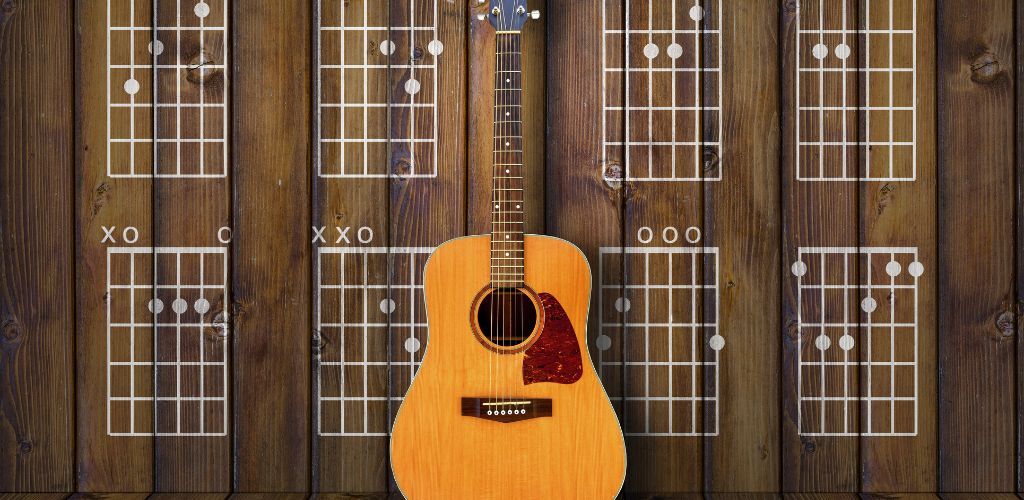







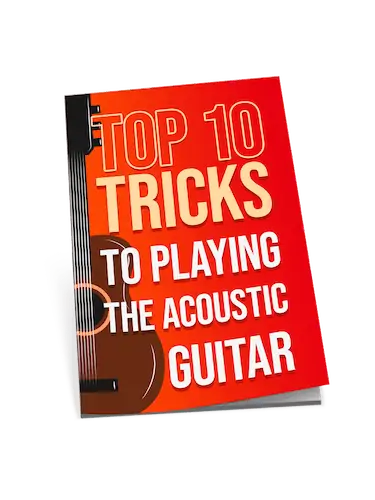
Oh great, another article telling me that Martin and Taylor are the holy grail of acoustics. Ever heard of Seagull or Breedlove, Hugh Richardson? Or are we just sticking to the script here?
Oh great, another article telling me how to use a guitar chord chart. As if I haven’t seen enough of these already. Revolutionary. 🙄
Hugh Richardson suggests the FENDER FA-115 for beginners, but let’s be realistic, it’s not just about the guitar brand, it’s about how you play it. I’ve seen novices make a high-end Fender sound like a tin can because they didn’t practice. And I’ve seen pros make budget guitars sing. The guitar doesn’t make the musician, folks. Remember, it’s all about practice, not the price tag.
This article neatly organizes the complexity of guitar chords into digestible sections. I’ll be recommending it to my students as a primer. However, the section on alternate tunings might be a bit advanced for absolute beginners.
interesting picks for recommended guitars. i own a BIG BABY TAYLOR BBT and it’s legit. really curious about how the FENDER FA-115 compares tho. anyone got a take on this?
PluckNoob, the FA-115 is a solid choice for beginners. Durable and good sound.
is the fa-115 good for beginners? looking to start soon
alternate tunings are a game changer tbh, they open up a whole new world of sounds. nice to see them getting some love here. makes playing way more fun when you dive into them.
Absolutely, alternate tunings can really elevate your playing. Don’t be afraid to experiment and find your own unique sound.
Interesting read on the guitar chords. I’ve been playing guitar for over a decade and it’s fascinating to see alternate tunings and voicings being discussed for beginners. It’s crucial for developing your own style. Surprised to see the FENDER FA-115 recommended here; it’s a great entry-level acoustic for sure but would love to hear your thoughts on how it compares to the YAMAHA FG800.
Hey, got any advice on electric guitars for beginners too? Thanks!
I found the section on alternate tunings to be particularly enlightening. It’s a testament to the guitar’s versatility.
To those just starting out, mastering chord transitions is crucial. It’s where the magic happens between notes and truly starts to sound like music. Practice slowly, ensuring each note rings clear and isn’t muffled. Precision first, speed second. Keep at it!
Just picked up my first guitar and this guide seems super helpful. Can’t wait to start practicing those chords. Thanks Hugh Richardson for making it sound so doable!